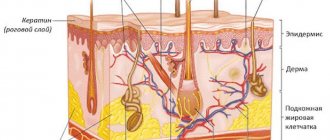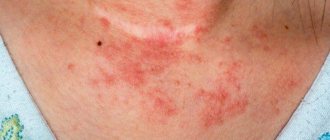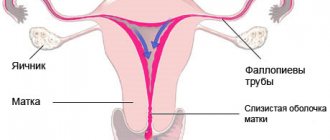In the human body, many metabolic processes occur every second. Remains of food and its components are excreted along with urine and feces. Some food components tend to color them, so sometimes you can see black stool.
Feces are the result of the processing of elements entering the human body, and by its qualitative characteristics it is always possible to assess the state of human health.
This reaction of the body in the form of black feces is often called “chernukha” or “melena” . In case of malfunctions in the body, the appearance of black feces is considered a dangerous signal from the body, which should alert a person.
Causes of dark stools
The reasons for the appearance of black feces can be different and its appearance does not always mean something bad. This phenomenon can occur in both women and men. Children are also not immune to black feces. All the reasons why stool turns black can be divided into two main categories:
- physiological;
- pathological.
Physiological causes are less dangerous and usually go away once the source of the problem is eliminated. Pathological ones are associated with dangerous changes in the body and often require medical intervention. The main factor in identifying the root cause is the general well-being of a person.
The body's reaction to foods
Black feces in humans can be a consequence of eating certain types of foods or a sudden change in diet.
In men with an addiction to drinking low-quality alcohol-containing liquids, black feces are a natural reaction of the body to poisoning.
Drinking large amounts of strong coffee or tea can give the feces a dark color.
Having foods high in calories in your diet can also cause black stools. Often a similar effect is observed when consuming the following products:
- beets;
- prunes;
- blood meat products;
- red grape varieties;
- red brands of wine.
Often, when people see dark-colored fibers in stool, they mistakenly perceive them as worms (helminths). In nature, such parasites have a completely different color, and the presence of such inclusions in the secretions is explained by a change in its color from the coloring pigments of food.
The body's reaction to medications
Black-green feces may appear after a course of antibiotic treatment, since when they are used, dead white blood cells accumulate in large quantities in areas of inflammation.
Taking painkillers containing salicylate can cause internal bleeding in an adult, which in turn leads to the appearance of dark stool.
Before using any medicine, it is recommended to study the instructions for its use, since a change in the color of the stool is necessarily indicated in the document as a possible side effect. In this case, it is worth paying attention to the consistency of feces after taking the drug.
If the stool is normal after taking the medicine, then you should not worry too much about its color. Diarrhea and loose stools during therapy are a signal of the need to consult a doctor for advice.
The black color can be caused by taking iron-containing medications and sorbents. This effect is observed when taking the following drugs:
- black activated carbon;
- Aspirin;
- De Nola;
- Ibuprofen.
Pregnant women may also experience black stools, which is associated with the use of a vitamin complex.
Digestive system problems and pathological changes
One of the common causes of black feces in newborns is swallowing a portion of blood during childbirth or getting it out of the nipples as a result of cracking.
More serious causes are associated with poor blood clotting, resulting in various types of bleeding.
The appearance of chernukha in adults may mean that this is a sign of serious problems in the digestive system.
In particular, this color appears due to the interaction of chromoprotein protein and hydrochloric acid produced by the stomach.
Black feces in an adult can appear as a result of bleeding in the body, provoked by various pathologies or surgical intervention.
Causes of diarrhea
- bacterial and viral infections (acute intestinal infections - AII), parasitic infestations. Acute respiratory infections are second only to acute respiratory infections (ARVI) in prevalence;
- enzyme deficiency: absolute - occurs, for example, with diseases of the pancreas, intolerance to milk sugar - lactose, and relative - with an excess of indigestible foods in the diet (food rich in plant fiber and fats), overeating;
- chronic diseases of the gastrointestinal tract (chronic colitis, enteritis, Crohn's disease, etc.) - when its mucous membrane is damaged, the absorption of nutrients is impaired;
- violations of the quantitative and qualitative composition of the intestinal microflora (dysbacteriosis);
- surgical pathology (appendicitis, polyps, intestinal tumors);
- nervous overstrain, emotional stress (“bear disease”);
- vitamin deficiency (deficiency of vitamin B2, niacin, etc.);
- side effects of certain medications (sorbitol, magnesium preparations, antacids, some antihypertensive drugs, antibiotics, antidepressants, non-steroidal anti-inflammatory drugs, etc.), overdose of laxatives.
It is difficult to find a person who has never suffered from diarrhea in his life - such a problem happens to each of us more than once. Perhaps that is why they often treat it lightly, letting things take their course and not seeking medical help in a timely manner. Meanwhile, “banal diarrhea” can be a manifestation of very serious, sometimes life-threatening diseases. If diarrhea develops, you need to remember the main alarming symptoms that require immediate medical attention:
- the appearance of mucus and blood in the stool;
- stool has a tar-like color and consistency (sometimes accompanied by vomit that resembles coffee grounds);
- passing copious watery stools more often than 15-20 times a day;
- copious light-colored stools against the background of a drop in body temperature below normal;
- combination of diarrhea and high fever;
- a combination of diarrhea, abdominal pain and severe vomiting;
- diarrhea lasts more than three days, despite prescribed treatment;
- diarrhea is accompanied by disturbances of consciousness;
- diarrhea for more than 2 days in an elderly person or a child under one year old;
- diarrhea appears periodically for no apparent reason, accompanied by weight loss and weakness.
If you have detected at least one of the listed symptoms, there is no need to hesitate. But this does not mean that in other cases seeking medical help is not necessary. Particularly serious consequences of diarrhea
may occur in old age and childhood, due to the particularly rapid onset of dehydration.
Diarrhea has a variety of not only causes, but also manifestations. First of all, this concerns the appearance of excreted feces: their consistency, color, visible impurities. This is very important for diagnosis. Let's look at the most common options.
Provoking factors
The appearance of dark-colored feces is very often associated with the development of ulcerative pathological changes in the jejunum and stomach. Black feces may indicate cirrhosis, hepatitis B, A and C.
If the appearance of black feces is observed against the background of a person’s poor health, then you should urgently sound the alarm and do not delay a visit to a medical facility.
The following pathologies provoke the appearance of black stools:
- stomach ulcer;
- acute lymphoblastic leukemia;
- varicose veins of the esophagus;
- tumor formations in the stomach (for example, colon cancer, pancreatic cancer);
- inflammatory process of the intestines and esophagus.
What examinations need to be completed
If blood is detected in the stool and systematic drops on toilet paper, you should contact a proctologist. The doctor will prescribe tests and instrumental examinations to identify gastrointestinal pathologies.
At NeoMed, to establish the most accurate diagnosis, a comprehensive examination is carried out, which will reveal the source of bleeding, the cause and degree of harm caused to the body. Often hidden blood loss leads to anemia. The scope of the diagnosis is determined by the doctor. It includes:
- Analysis of feces for occult blood and helminths.
- Blood test for hemoglobin.
- Examination of the anus to identify cracks and external hemorrhoids.
- Sigmoidoscopy is an instrumental examination of the mucous membrane of the rectum and distal parts of the sigmoid colon.
- Colonoscopy is an endoscopic examination of the intestine and its internal walls from the inside. At NeoMed, the procedure is carried out in medicated sleep without pain or discomfort.
- Ultrasound of the intestines, stomach, and, if indicated, liver.
- X-ray of the gastrointestinal tract.
- Gastroscopy is an endoscopic examination of the stomach and esophagus. Performed if bleeding is suspected in the stomach, esophagus, or duodenum.
- CT and MRI of the internal organs of the digestive system to identify benign and malignant formations.
During all endoscopic examinations, when indicated, a biopsy is performed - materials are taken for histology. This is the best method for early detection of cancer. If bleeding is detected, it is stopped immediately. And detected polyps are removed during the examination.
Do not hope that the blood will disappear and the stool will become light; it is possible that every day is already expensive to establish a diagnosis and begin treatment. They are already waiting for you at the Anapa clinic “NeoMed”, call and make an appointment.
Symptoms
Serious symptoms are abnormal behavior of the body and a person usually experiences the following symptoms:
- stomach pain;
- temperature increase;
- heartburn;
- nausea and vomiting;
- pale skin;
- dizziness;
- increased sweating;
- bleeding from the anus.
Against the background of such a reaction of the body, anemia, constipation, and diarrhea may occur. Sometimes the appearance of black stool is a consequence of bleeding after surgery.
The disintegration of malignant tumors also leads to internal bleeding, leading to the coloring of stool in a rich black color.
The presence of viral or bacterial infections can also be a provoking factor for the appearance of chernukha.
Diagnostics
In the absence of obvious signs of illness, you can observe a change in the color of the stool for several days.
If the cause is the intake of coloring substances into the body along with foods, then after eliminating them from the diet, the color should normalize. If the problem persists for several days, you should consult your doctor for diagnosis.
Problems in the digestive system are indicated by the black color and smell of feces. At the same time, by the nature of the smell, you can determine the most likely problem area in the human body. The nature of the smell says a lot:
- putrefactive - problems in the digestive system associated with disruption of protein breakdown processes or chronic inflammation of the large intestine;
- rancid - problems with the digestive tract associated with pancreatic secretion or lack of bile in the intestines;
- sour - the presence of dyspepsia, that is, enzyme deficiency.
For diagnosis, a blood test is taken and a laboratory test is performed to determine the level of hemoglobin. A decrease in this indicator may indicate the presence of internal bleeding in the body.
To identify the general clinical picture, the attending physician prescribes a number of additional studies to assess the condition of the organs and the potential danger of bleeding. Most often carried out:
- research using a probe;
- MRI;
- CT;
- radiography;
- list of standard tests.
Such diagnostic methods make it possible to accurately determine the presence of pathological changes in the human body and develop therapeutic treatment tactics.
general characteristics
The appearance of an unusual color of stool is an objective symptom that patients always notice.
The color of stool varies from grayish-white to black. In this case, the process of defecation is sometimes accompanied by pain and discomfort in the abdomen. With a visible change in the characteristics of feces, patients often experience negative psycho-emotional sensations caused by the fear of a serious illness. If the color change is physiological in nature, the person does not experience any unpleasant symptoms either during bowel movements or during the day. A change in the color of stool is often accompanied by other dyspeptic disorders: nausea, vomiting, abdominal pain, impaired stool frequency and consistency of feces, which indicates the development of diseases of the digestive tract. The combination of pale gray stool and dark urine usually indicates hepatitis and other acute inflammatory diseases of the liver. The appearance of black, brick or red feces during defecation is characteristic of bleeding from the gastrointestinal tract of varying intensity and requires an immediate visit to a gastroenterologist.
Treatment
If the cause is the entry of coloring pigments into the body during the use of medications or after eating food, then to restore the color of stool it is enough to eliminate coloring products and medications.
In case of serious problems, the likelihood of needing hospitalization is very high. In some cases it is impossible to do without surgical intervention. If your condition suddenly worsens, you should immediately contact an ambulance service. Before the doctors arrive, the patient should not be given water or food; if possible, try to ensure recumbent rest.
For serious pathologies, the doctor can prescribe only two types of treatment - surgery and medication. Any therapy necessarily involves a low-calorie diet and bed rest.
Drug treatment
Drug treatment is prescribed when pathological changes are detected, which result in bleeding, leading to the appearance of black stool. This treatment is aimed at excluding the root cause of the disease.
In a significant proportion of cases, the cause of black stool is somehow related to a disease of the digestive system. These types of pathologies include various types of gastritis.
Antral gastritis is associated with the presence of the bacterium Hilicobacter pylori in the human body, as a result of which the acidity of the gastric juice increases and the inflammatory process begins.
There are several types of the disease, some of which are considered a precancerous condition. In severe cases of the disease, gastric bleeding may occur, leading to the appearance of black stool.
Treatment of gastritis includes antibacterial therapy, taking drugs that reduce acidity and normalize the production of hydrochloric acid. Since today there are more than 10 varieties of this disease, the complex of medications is selected purely individually. The following drugs are often prescribed:
- antacids to neutralize hydrochloric acid - Gastal, Maalox, Rennie;
- antisecretory agents to reduce the level of gastric juice and acid - Ranitidine, Famotidine;
- inhibitors to suppress enzymes - Nexium, Ortanozol, Nolpaz;
- anticholinergic agents to suppress acid production - Gastrapecin;
- antibacterial agents - Amoxicillin, Metronidazole, Clarithromycin.
Gastritis is always associated with an acute inflammatory process that affects the lining of the gastric mucosa. The disease can occur in acute and chronic forms.
The acute form responds well to treatment, which cannot be said about the chronic form. It is in the chronic form that gastric bleeding is characteristic, leading to the appearance of black stool.
Surgery
The appearance of black feces is very often observed in cancer. Their treatment involves a whole complex of treatments:
- drug therapy;
- radiation exposure;
- laser therapy;
- surgical intervention.
There are 4 stages of cancer in total. In the early stages, drug treatment and radiation therapy can be performed without surgery. Later stages in most cases require surgical intervention.
Black feces due to medication use
Blackened stool may be the result of taking medications that affect biochemical metabolic processes in the gastrointestinal system.
What medications turn stool black:
| Group of drugs | Drug names | Reason for color change |
| Gastroprotective | De-Nol, activated carbon, Vikair, Bismofalk, Ventrisol | Breakdown and elimination of toxic compounds |
| Dietary supplements and vitamin complexes | Fenyuls, Ferummlex | Contains substances that change the color of feces |
| Anti-inflammatory | Nemisil, Ibuprofen | Contains bismuth, which affects the color of stool |
| Blood thinner | Fenilin, Aescusan, Kurantin | After ingestion, the intestinal mucosa may bleed |
The causes of stool staining in women over 40-50 years of age are most often associated with taking iron supplements prescribed for iron deficiency anemia.
Such medications include Ferlatum, Fersinol, Hemohelper, Activerin.
The necessary part of iron is absorbed by the body, the excess is excreted naturally, along with feces. The trace element enters into a chemical reaction with various compounds that color the stool black.
Also, blackening of stool in an adult can be associated with long-term use of Aspirin and other drugs based on acetylsalicylic acid, as they cause severe irritation of the mucous membranes of the digestive system.
Complementary and alternative treatments at home
The main rule of treatment is moderation in diet and adherence to a correct lifestyle. For the treatment and prevention of diseases such as gastritis and ulcers, the fasting method can be used.
The therapeutic effect is achieved by maintaining a break in food intake, which allows the mucous membrane of the organs to recover. This method should be approached with caution and used only under the supervision of a physician.
Nutrition and supplements
Proper and balanced nutrition contributes to the normal functioning of the digestive system, failures in which lead to the appearance of black feces.
You should pay close attention to the calorie content of the food you eat and avoid spicy and salty foods as much as possible. Don't get carried away with fast foods and dry snacks.
It is recommended to provide the body with a balanced and proper diet, with a sufficient level of fruits and vegetables in the menu. The diet should include:
- dairy products;
- various types of cereals;
- bran;
- vegetables and fruits.
When preparing dishes, it is better to use the steam cooking method. Try not to eat foods that are too hot, as they provoke the formation of new foci of erosion in the stomach.
Do not overuse antibiotics. It is necessary to take such drugs only as prescribed by the attending physician in compliance with all rules and dosages according to the instructions.
Uncontrolled use of antibiotics will ultimately lead to an imbalance of the intestinal microflora, which can lead to serious pathological changes in the future.
Folk remedies
The experience of traditional medicine is effectively used to prevent and eliminate the root cause of the appearance of black stools.
If black stool is caused by eating foods that stain the stool, time is the best remedy.
After a certain period and exclusion of these foods from the diet, the stool will acquire a natural color.
The use of one or another traditional medicine depends on the purpose of its use. For gastritis, it is effective to use:
- flax seeds;
- green apples;
- freshly squeezed potato juice;
- infusion of herbs chamomile, St. John's wort, yarrow.
What is worth remembering when using such recipes is that you should not rely only on the effect of folk remedies; their use is justified only in combination with a course of medication.
Why is stool brown?
The color of stool is formed mainly due to bile pigments, which are formed in the liver cells and then enter the intestines with bile. They are a product of the processing of the iron-containing part of erythrocyte hemoglobin (heme) and myoglobin in muscle tissue. In addition, the spleen takes part in the breakdown of red blood cells. Old blood cells are disposed of, unnecessary substances are sent to waste.
Similar pigments are found in mammals, lower vertebrates and invertebrates, in bright green plants and red algae. The biochemical reaction goes through the stage of formation of greenish-blue biliverdin, yellow-orange bilirubin. Bacteria act on bilirubin in the intestines. Their enzymes convert biliverdin into stercobilinogen (up to 280 mg per day).
Under the influence of light, stercobilinogen excreted in feces is oxidized into stercobilin with a brown color reaction. In addition to natural pigments, coloring substances of undigested dietary fibers, waste products of bacteria, and processed residues of medicinal substances are excreted in feces. Therefore, the color is unnatural.
Prevention
Only regular periodic examinations at a medical facility will help you avoid serious problems. It is better to prevent the disease in the early stages than to fight it after significant pathological changes in the body. It is recommended to undergo a routine examination at least 2 times annually.
It is worth knowing that pathological changes in a child’s body occur much faster than in an adult. At the first sign of problems, you should contact your pediatrician as soon as possible.
Women are required to visit a gynecologist. It is recommended to make such visits at least once a year.
There are the following recommendations regarding nutrition and lifestyle:
- reduce products that tend to color feces;
- review your diet, eliminate foods that are too high in calories;
- avoid overeating;
- do not indulge in fast food, fried and spicy foods;
- strives for a healthy lifestyle, does not smoke or drink alcoholic beverages.
Foods high in vitamins A, B, C, and E have an anti-cancer effect. Regular visits to the doctor, an active lifestyle, and proper diet will reduce the risk of serious pathologies in the future.
Forecast
Gastritis has become a common disease of our time, which is associated with the fast pace of modern life, irregular and poor-quality nutrition.
Experts say there has been a significant increase in this disease over the past 10 years. According to statistics, in developed countries, 95% of the population has problems with the digestive system.
People who drink large doses of alcohol and take corticosteroids are at risk. Pathological changes that occur in the body at advanced stages of the disease cause bleeding, the symptom of which is the appearance of black feces.
Treatment of gastritis in the early stages is effective and treatable. In advanced stages, the disease will cause significant complications:
- stomach ulcers;
- bleeding;
- transition of the disease to a chronic form.
Esophageal cancer is a common disease in adults. If there is bleeding in the later stages of the disease, such people experience black stool.
The earlier the disease is detected, the greater the likelihood of a favorable prognosis in the treatment of the disease.
In total, there are 4 stages and each of them has its own healing process:
- first stage - 90%;
- second stage - 50%;
- third stage - only 10% live 10 years;
- stage four - life expectancy is no more than 6 months and there is practically no chance of cure.
Black feces can be the result of either a harmless reaction of the body or be a harbinger of serious problems that require immediate treatment.
Normal stool from a healthy person has a brown tint, and any deviations indicate an abnormal reaction of the body to the processes occurring in it.








